With its national motto of “unity in diversity,” Indonesia proved a fitting host for the 17th assembly of Mennonite World Conference (MWC)—downsized by COVID-19 restrictions but full of joy, beauty and fellowship.
In an outdoor venue at a Mennonite seminary on a mountaintop in the city of Salatiga, on the island of Java, Anabaptists from 44 countries gathered from July 5 to 10 for the global church reunion that’s held every six years—or seven, in this case, after a postponement due to the novel coronavirus pandemic.
A Christian celebration in a nation that is 87 percent Muslim, the event concluded with Sunday morning worship at the 12,000-seat Holy Stadium—home of JKI Injil Kerajaan, a Mennonite congregation that is one of Indonesia’s largest churches—in nearby Semarang.
The pandemic long ago dashed hopes to fill the Anabaptist megachurch. MWC capped attendance at 1,000 because “we didn’t see how we could follow all the government’s rules that came with over 1,000,” said Liesa Unger, MWC’s chief international events officer. “Our biggest fear was not COVID itself but being shut down by the government.”
On-site registration was 1,144—594 for the entire week and 550 for a day. Sixty-four came from the United States and 31 from Canada. At least 789 registered to watch the livestream individually or in groups around the world.
The lack of MWC’s usual throng—the average daily attendance of 700 was about 10 percent of a typical assembly—did not diminish the significance of getting a taste of what God is doing through about 107,000 Anabaptist Christians (from three synods: GKMI, GITJ and JKI) in a Muslim-dominant and diversity-affirming nation.
Didik Hartono, pastor of the GKMI (Muria Christian Church of Indonesia) congregation in Winong Village, told how his church and a neighbouring mosque live out Indonesia’s vision of religious harmony.
The meeting places of the two faiths “seem to be as one,” he said, because a canopy extends across the street, connecting them.
A video featured church and mosque members describing their friendship and cooperation as an example of “the ideals of Indonesia.”
“May we all keep on building the brotherhood values and live in peace with everyone, and also with ones who are not the same religion as us,” Hartono said.
Whirling dervishes
In one evening service, Sufi Muslim whirling dervishes, or semazens, demonstrated a form of Islamic spirituality. Wearing floor-length white frocks, long-sleeved white jackets and black felt hats, five men from Jepara’s Sufi Islamic community spun in circles, with arms raised, while women sang and a band played. Sufism is a mystical form of Islam. Whirling is a meditative practice to draw closer to God.
The Sufis’ religious dance was livestreamed from the Jepara GITJ (Evangelical Javanese Church) congregation. Because the congregation works closely with the local Sufi community, the pastor wanted to invite Sufi participation, and MWC officials agreed, Unger said.
The fact that the Sufi dancers were not present in Salatiga reflected the hybrid character of the assembly. Even onsite, conferencegoers became livestream watchers. To involve four congregations in Central Java that had expected to host visitors, MWC arranged for them to host parts of four evening services. Projected on a screen behind the stage, speakers and musicians at the remote sites reached local audiences and the main conference crowd.
Sidelined by COVID-19
Some conferencegoers got COVID-19 and had to miss part of the assembly. Everyone took a rapid test upon arrival. About 5 percent tested positive, but no one got seriously ill, Unger said. Everyone was asked to wear a mask at all times.
César García, MWC’s general secretary, tested positive and had to quarantine for part of the week. Substitutes read the messages of two keynote speakers, Salomé Haldemann of France and Willi Hugo of Guatemala.
After more than two years of uncertainty and changing plans, organizers were relieved to pull the event off.
At times, the assembly itself seemed in doubt, said Paulus Widjaja, who chairs MWC’s national advisory committee in Indonesia. He’s grateful it wasn’t cancelled, but downsizing was a disappointment.
“We were planning to have about 10,000 people,” he said. “We had hoped the president of Indonesia might come to the opening ceremony. We believed that if we invited him, he would come. Then corona came, and everything—poof!”
Unger said: “I’m happy that we moved it by a year, because last year was the worst COVID time. India was in the media, but Indonesia was suffering even more.”
Turning up the volume
On the assembly’s four full days, conferencegoers worshipped both morning and evening, with workshops and tours in the afternoon. An international ensemble led 45 minutes of singing to start the morning service and half an hour to open the evening meeting.
Singers from around the world contributed diverse styles. On opening night, the worship team from the 18,000-member Jakarta Praise Community Church—one of several JKI (Indonesian Christian Congregation) congregations that are among the largest churches in all of Indonesia—brought high energy and rock-concert volume.
Worshippers heard two featured speakers each morning and two each evening, plus other stories and testimonies, building on the assembly theme, “Following Jesus together across barriers.”
Each of the four full days focused on a different continent, and speakers addressed different aspects of what Anabaptists can do together: Europe, learning; Asia, living; Latin America, caring; Africa, celebrating. North America was featured in the opening service.
Many speakers offered personal views of events and situations in their countries and described how Anabaptists are seeking to bring peace and ease suffering.
How can I celebrate
Jeremiah Choi, a pastor in Hong Kong, told of demonstrations and violence in recent years in response to the Chinese government’s crackdown on Hong Kong’s freedom.
“The Hong Kong I am now living in is not the Hong Kong I used to know,” he said. “Our challenge is this: How to be a peacemaker when others are violent.”
Many people are leaving Hong Kong for the United Kingdom, including 10 percent of his congregation, Agape Mennonite Church, “to seek a place of freedom and hope,” Choi said. But he has vowed to stay, to build the church and work for peace.
“If you are facing an unpredictable tomorrow,” Choi said, “look up to God, and look to your calling.”
Tigist Tesfaye Gelagle, a young woman from Ethiopia, addressed the African theme of celebration by asking how it was possible to celebrate amid the sins of war, hunger, racism, oppression of women, and “when I am treated like a criminal at immigration in most countries. When I am treated as a terrorist. When I am at the mercy of my superiors. How can I enjoy and dance and worship?”
Celebration is possible, she said, when people treat each other as significant.
“Unless we are significant to each other, there is no celebration of togetherness,” she said. “Seeing significance in others crosses barriers, I can forget my pain if I am significant to you.”
Collapsing convictions?
Salomé Haldemann of France suggested Europeans needed to be trained in peacemaking by those in the global church with experience resisting war. She said Russia’s invasion of Ukraine had shaken western European Mennonites’ commitment to nonviolence.
“We affirmed nonviolence when our context was peaceful, but in the face of war we see nonviolent resistance as naive and unrealistic,” said Haldemann, a graduate of Anabaptist Mennonite Biblical Seminary. Anne Hansen of Germany read her address.
“Today we are afraid that war may overtake Europe,” she said. “Suddenly our theology and beliefs feel obsolete. A storm took over Europe, and our convictions collapsed.”
Citing the tradition of calls to action at MWC assemblies, she noted that, in 1967 in Amsterdam, American civil rights leader Vincent Harding called on Mennonites to “come alongside Black sisters and brothers in the freedom struggle.”
In 1984 in Strasbourg, American writer and professor Ron Sider encouraged starting a nonviolent peace force, which sparked the creation of Christian Peacemaker Teams, now known as Community Peacemaker Teams.
“But most of us have stayed on the sidelines where things are comfortable,” Haldemann said. “What does it look like to practise love of the enemy on a collective level in our time and place?
“Maybe Mennonites could prepare for war resistance with an anti-military service, like a nonviolent resistance boot camp. It might be time for us to create a widespread training for church people to learn and practise the basics of civil resistance.”
Miracle makers
Ebenezer Mondez of the Philippines cited persecution in India and political violence in Myanmar as places where Christians are suffering but getting less attention than Ukraine.
After praising Mennonites in Ukraine, who are helping their neighbours through the hardships caused by Russia’s invasion—and commending those who have sent aid to Ukraine —he said: “I challenge us to do the same for our brothers and sisters in India and Myanmar. Let us learn more about their situation and how we can be the hands and feet of Christ in times of need.”
“In times of trouble, we are the extension of God’s hand,” he said. “The miracles of God come through us. This is what living together in times of crisis looks like. We forget about our differences and disagreements, and we find our common goal for peace. Truly, crisis and hardship bring out the best in us.”
Desalegn Abebe, president of Meserete Kristos Church in Ethiopia—whose 370,000 members make it the largest MWC denomination—invited everyone to the next assembly, in Ethiopia in 2028.
Stories of Dirk and Ruth
At the closing worship service on the morning of July 10 at Holy Stadium, more than 1,000 attended, sitting in every other seat for social distancing. H. Ganjar Pranowo, governor of Central Java, a region of 36 million people, greeted the crowd with references to peacemaking and Anabaptist history.
He said Indonesia’s president, Joko Widodo, was seeking to mediate between Russia and Ukraine to stop the war.
“When there is bloodshed between countries, it is our duty to seek peace between them,” he said. “Whatever the reason for war, it can never be justified.”
Pranowo cited a story that many Anabaptists would recognize as the Martyrs Mirror account of 16th-century martyr Dirk Willems. He spoke in Indonesian, with the English translation projected on a screen.
He said he would not need to tell others to “imitate the Mennonites in practising and spreading peacefulness,”—as Willems did—“when he saw a person who harmed him fall into a puddle of ice [and did] not run away, but instead reached out to help, even if in the end he sacrificed his life”—because the principles of peace and truth are “embedded in every human soul.”
In the week’s final message, Nindyo Sasongko, an Indonesian GKMI pastor who teaches at Fordham University and lives in New York City, wrapped up the theme of crossing barriers by linking it to the biblical story of Ruth, a Moabite woman who vowed to follow her Israelite mother-in-law wherever she went.
In her loyalty to Naomi, Ruth showed profound courage, breaking boundaries of nationality and religion, Sasonko said. When we follow Jesus across barriers, he said, we also follow the example of Ruth.
“Reconciliation cannot be achieved when there is no commitment to cross boundaries,” he said.
Past and future
The presidency of MWC passed from J. Nelson Kraybill of the United States to Henk Stenvers of the Netherlands. A medical doctor, Stenvers has served on the MWC Deacons Commission for 10 years. Kraybill presented him with a shepherd’s staff, symbolic of leading the Anabaptist flock.
The transfer of the presidency to a Dutch man called to mind the historic connection between Indonesia and the Netherlands. The Dutch ruled the East Indies for more than 300 years, until Indonesia declared independence in 1945.
Remnants of Dutch culture remain. At the d’Emmerick Hotel, which features a nearly seven-metre-tall replica windmill, Dutch pastor Henk Leegte reflected on the contrast between colonial oppression and the global Christian fellowship that MWC makes possible.
“Indonesia is an important part of Dutch consciousness,” said Leegte, a pastor of the Singelkerk congregation in Amsterdam. “It’s a part of our being—in literature, art, food. But Indonesians are not thinking about the past.
“We have a shared history, as the Indonesia Mennonite church started with Dutch missionaries. For me, it is wonderful to finally visit this country, which I’ve heard so much about, and to fellowship with the people here in our shared Mennonite faith.”
At the closing ceremony, Henk Stenvers, the new MWC president, looked toward the future.
“Now at the end of this great gathering, we look ahead with energy and hope,” he said. “In 2025, we hope to commemorate the birth of Anabaptism in Zurich and, God willing, in six years another assembly in Ethiopia. We all will work hard to make Mennonite World Conference an even stronger communion of faithful followers of Christ.” l
Paul Schrag is editor of Anabaptist World. This article was written for Meetinghouse, a group of Mennonite publications.
For more about Indonesia 2022 and the Global Youth Summit, see pages 13-23 and visit the profiles of Mennonite World Conference (MWCMM) and Young AnaBaptists (YABs) on Facebook, Instagram, YouTube and Flickr.
For discussion
1. At the final worship service of the Mennonite World Conference (MWC) assembly, Holy Stadium was not even 10 percent full. Was low attendance a sign of discouragement? In what ways was the assembly a sign of hope for the church? What do you think attendance will be like in 2028, when MWC plans to meet in Ethiopia?
2. Sufi Muslims were invited to demonstrate their meditative practice of whirling at an evening service. Why did the planning committee of MWC extend this invitation? Why is it important to have “friendship and cooperation” with other faith groups?
3. Salomé Haldemann of France sees nonviolent convictions eroding in the face of war in Ukraine. “Suddenly our theology and beliefs feel obsolete,” she wrote. Do you agree? What does it mean to love enemies and work for peace in today’s world?
4. Ebenezer Mondez challenged the church to respond to all situations of suffering, not only those that get lots of attention. Why does Ukraine get more attention than persecution in India or Myanmar? How can we be more informed about what is happening in other parts of the church?
5. If you were responsible for making plans, how would MWC celebrate the 500th anniversary of Anabaptism in 2025?
—By Barb Draper

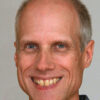
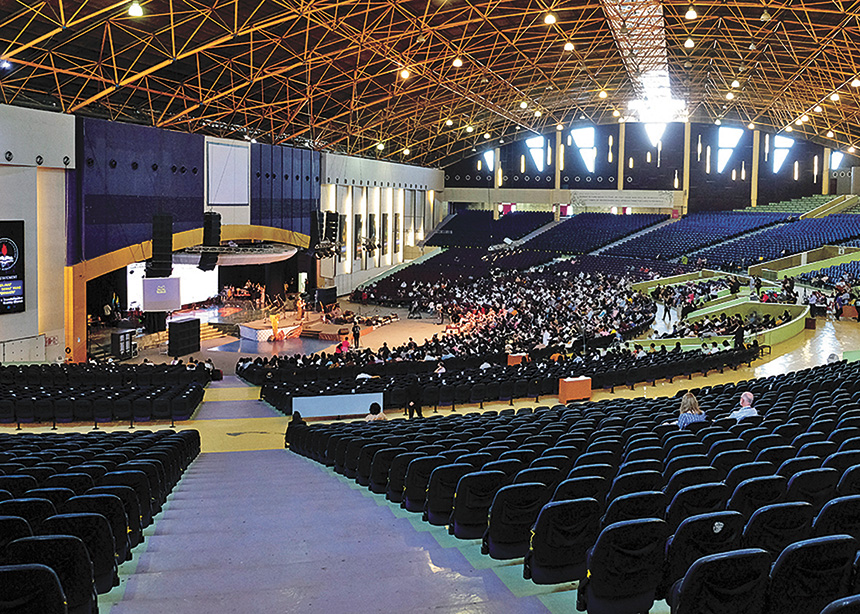
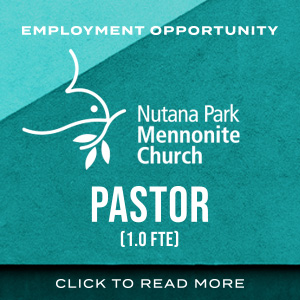
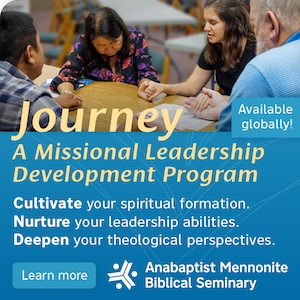

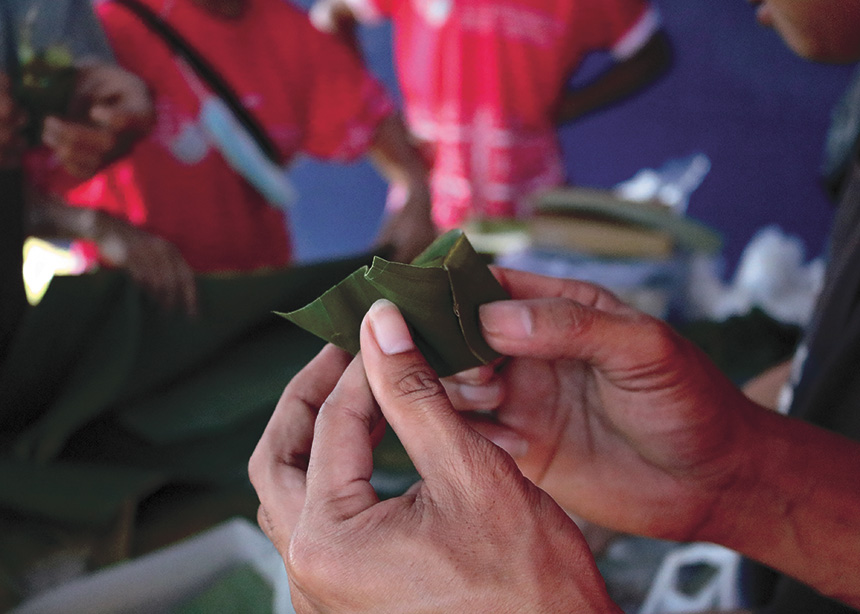


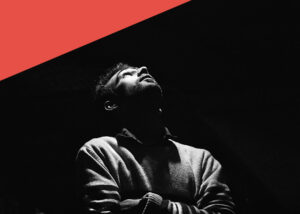

Leave a Reply
You must be logged in to post a comment.